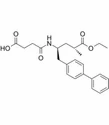Product Description: Alpha Naphthol
Alpha Naphthol, also known as 1-naphthol, is a versatile aromatic compound with a variety of industrial applications. This organic chemical is derived from naphthalene and is characterized by its white to light yellow crystalline appearance. Alpha Naphthol is utilized primarily as a precursor in the synthesis of dyes, pharmaceuticals, antioxidants, and other specialty chemicals due to its unique chemical properties and reactivity.
Key Features:
Chemical Reactivity: Alpha Naphthol exhibits significant chemical reactivity, making it a valuable building block in organic synthesis. It contains a hydroxyl (-OH) functional group, which can undergo various chemical reactions such as oxidation, acylation, and diazotization to yield a wide range of derivatives with diverse functionalities.
Dye Synthesis: Alpha Naphthol is extensively used in the production of azo dyes, anthraquinone dyes, and other organic pigments. It serves as a diazo component in diazo coupling reactions, forming azo compounds that impart vibrant colors to textiles, plastics, inks, and other materials.
Pharmaceutical Intermediates: Alpha Naphthol serves as a key intermediate in the synthesis of pharmaceutical compounds, including antimalarials, antiseptics, and analgesics. It undergoes various chemical transformations to yield active pharmaceutical ingredients (APIs) with therapeutic properties.
Antioxidant Properties: Alpha Naphthol exhibits antioxidant properties, scavenging free radicals and inhibiting oxidative degradation reactions in organic compounds. It is used as a stabilizer and antioxidant additive in rubber, plastics, and lubricants to prevent degradation and extend product shelf life.
Biological Activity: Some derivatives of Alpha Naphthol exhibit biological activity and pharmacological effects, making them useful in medicinal chemistry and drug discovery. They may possess antibacterial, antifungal, or anticancer properties, contributing to the development of novel therapeutics.
Applications:
Dye Industry: Alpha Naphthol is a crucial component in the synthesis of azo dyes, which are widely used in the textile, printing, and colorant industries to impart bright and durable colors to fabrics, paper, and plastics.
Pharmaceuticals: Alpha Naphthol derivatives find applications in pharmaceutical manufacturing for the synthesis of APIs and drug intermediates. They contribute to the development of medications for various therapeutic indications, including infectious diseases, inflammation, and cancer.
Chemical Intermediates: Alpha Naphthol is employed as an intermediate in the synthesis of specialty chemicals, agrochemicals, fragrances, and flavors. It serves as a versatile precursor for the production of diverse organic compounds with valuable properties and functionalities.
Rubber and Plastics: Alpha Naphthol derivatives are used as antioxidants and stabilizers in the rubber and plastics industries to prevent degradation and extend the service life of rubber products, plastic polymers, and synthetic materials.
Research and Development: Alpha Naphthol and its derivatives are valuable tools in chemical research, organic synthesis, and laboratory experimentation. They enable scientists and researchers to explore new chemical reactions, develop novel materials, and advance scientific knowledge.
Safety Considerations:
Alpha Naphthol should be handled and stored in accordance with safety guidelines provided by the manufacturer and regulatory authorities.
Personal protective equipment (PPE), including gloves, goggles, and lab coats, should be worn when handling Alpha Naphthol to prevent skin contact, inhalation, or ingestion.
Adequate ventilation should be maintained in work areas where Alpha Naphthol is used to minimize exposure to vapors and fumes.
Spills or leaks of Alpha Naphthol should be promptly cleaned up and disposed of according to established protocols and regulatory requirements.
Alpha Naphthol is a versatile chemical compound with wide-ranging applications in the dye, pharmaceutical, chemical, and materials industries. Its unique reactivity and properties make it an indispensable building block in organic synthesis and chemical manufacturing processes.








Reviews
There are no reviews yet.